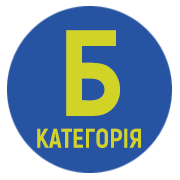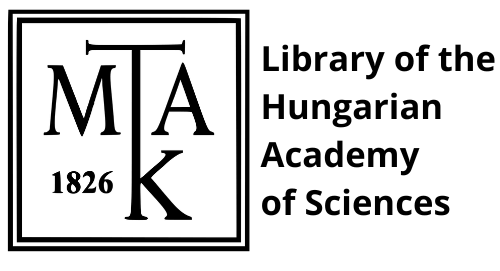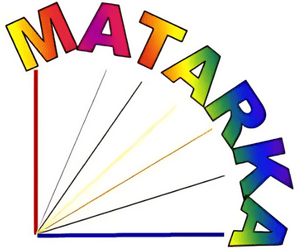Changing Hungarians' L1 education
DOI:
https://doi.org/10.58423/2786-6726/2023-1-9-25Keywords:
Hungarian standard language ideology, “correct” speech, social harms, additive language pedagogy, changing Hungarian cultureAbstract
The transmission and maintenance of Hungarian standard language ideology is extremely harmful socially because it perpetuates social inequity and reduces the nation's resources. The insistence on speaking Hungarian “correctly”, i.e., that all Hungarians speak their mother tongue “correctly”, is both unrealistic and socially extremely damaging. In addition to anecdotal evidence cited from belletristic authors Gyula Illyés (1930s), Szilárd Borbély (21st century) and others, the results of several sociolinguistic studies are cited to show how unrealistic such expectations are. These studies cover important sociolinguistic variables e.g., t-final verbs and the inessive case ending (bVn) as used by Hungarians in Hungary, in Transcarpathia (Ukraine) and in Transylvania (Rumania). The social harms that result are illustrated by several well-documented cases of linguicism. The author recommends that the evaluation of linguistic phenomena in terms of “correct – incorrect” should be abandoned and replaced by “appropriate – inappropriate” evaluations (where appropriate language use varies according to speech partners and speech situations). The subtractive language education prevalent in Hungarian schools should be replaced by additive education. Teacher training should be revamped similarly, but the most difficult task ahead is changing the culture of widespread belief in “correct Hungarian” and cultivating a more democratic language ideology which, rather than striving to eliminate language variation, respects linguistic varieties and their speakers.
References
Abercrombie, David 1951/1965. RP and local accent. In: Abercrombie, D. ed. Studies in Phonetics and Linguistics. Oxford: Oxford University Press. 10–15. o. (Originally printed in 1951) (In English)
Beregszászi Anikó 2012. A lehetetlent lehetni: Tantárgy-pedagógiai útmutató és feladatgyűjtemény az anyanyelv oktatásához a kárpátaljai magyar iskolák 5–9. osztályában. [A pedagogical guide and a collection of exercises for teaching the mother tongue in the 5th-9th grades of Hungarian schools in Transcarpathia.] Budapest: Tinta Könyvkiadó. http://real.mtak.hu/23323/1/¬BA_B5_proba.pdf (In Hungarian).
Beregszászi Anikó – Csernicskó István 2007. A kárpátaljai magyar nyelvjárásokról. In: Csernicskó István – Márku Anita szerk. Hiába repülsz te akárhová…: Segédkönyv a kárpátaljai magyar nyelvjárások tanulmányozásához. [A guidebook for the study of the Transcarpathian Hungarian dialects.] Ungvár: PoliPrint. 7–96. o. http://real.mtak.hu/25480/1/¬Hiaba_repulsz_te_akarhova_u.pdf (In Hungarian).
Borbély Szilárd 2021. Nincstelenek. Már elment a mesijás? [Penniless people. (A novel)] Budapest: Jelenkor Kiadó. (Ebben: A tanító néni undorodik tőlünk, a 264–267. oldalon) (In Hungarian).
Chambers, J. K. 2009. Sociolinguistic Theory: Linguistic Variation and its Social Significance. Revised Edition. Malden, MA: Wiley-Blackwell. (In English)
Csernicskó István 1998. A magyar nyelv Ukrajnában (Kárpátalján). (A magyar nyelv a Kárpát-medencében a XX. század végén I.) [The Hungarian language in Transcarpathia, Ukraine.] Budapest: Osiris Kiadó. http://real.mtak.hu/19610/(In Hungarian).
Deme László 1963. Gondolatok nyelvatlasz-ellenőrzés közben [Thoughts on checking the data in the Hungarian Dialect Atlas]. In: Benkő Loránd szerk. Tanulmányok a magyar nyelv életrajza köréből [Studies in the biography of the Hungarian language]. Budapest: Akadémiai Kiadó. 66–72. o. (In Hungarian).
Gellért Sándor 2004. Kölcsey [Kölcsey]. Kolozsvár: Polis Könyvkiadó. (In Hungarian).
Grétsy László – Kemény Gábor (szerk.) 2005. Nyelvművelő kéziszótár [A manual of correct Hungarian usage]. Budapest: Tinta Könyvkiadó. (In Hungarian).
Guttmann Miklós 1996. A nyelvi környezet és az anyanyelvoktatás [Language environment and mother tongue teaching]. (MNyTK. 207.) Budapest: Magyar Nyelvtudományi Társaság. 108–113. o. (In Hungarian).
Halliday, M A K – Angus McIntosh – Peter Strevens 1964. The Linguistic Sciences and Language Teaching. London: Longmans. (In English)
Illyés Gyula 1999. Puszták népe [People of the Puszta]. Osiris Kiadó, Budapest. (In Hungarian).
Kádár Edit 2017. FELADATBANK anyanyelvi tanórák tervezéséhez az V–VIII. osztályban [TASKBANK for planning mother tongue lessons in classes V–VIII]. Kolozsvár: Ábel Kiadó. (In Hungarian).
Kassai Ilona 1998. Csoda-e, ha suksükölünk? [Is it any wonder that many Hungarians use t-final verbs ”incorrectly”?] In: Sándor Klára szerk. Nyelvi változó – nyelvi változás [Linguistic variable – language change]. Szeged: JGYF Kiadó. 23–25. o. (In Hungarian).
Kontra Miklós 2010a. Felcserélő anyanyelvi nevelés vagy hozzáadó? (Papp István igaza) [Subtractive or additive mother tongue education?]. In: Uő, Hasznos nyelvészet [Socially useful linguistics]. Somorja: Fórum Kisebbségkutató Intézet. 57–60. o. https://mek.oszk.hu/08700/08745/ (In Hungarian).
Kontra Miklós 2010b. A magyar lingvicizmus és ami körülveszi [Hungarian linguicism and its surroundings]. In: Uő, Hasznos nyelvészet [Socially useful linguistics]. Somorja: Fórum Kisebbségkutató Intézet. 65–89. o. https://mek.oszk.hu/08700/08745/ (In Hungarian).
Kontra Miklós 2019. Hogyan lehet, hogy az Akadémiától a kocsmárosokig mindenki támogatja a magyarok magyarok általi nyelvi diszkriminációját? [How can it be that all Hungarians support the linguistic discrimination of Hungarians by Hungarians?] In: Uő, Felelős nyelvészet [Socially responsible linguistics]. Budapest: Gondolat Kiadó. 83–101. o. https://mek.oszk.hu/22400/22434/ (In Hungarian).
Kontra Miklós szerk. 2003. Nyelv és társadalom a rendszerváltáskori Magyarországon [Language and society in Hungary at the fall of Communism]. Budapest: Osiris Kiadó. (In Hungarian).
Kontra Miklós – Borbély Anna szerk. 2021. Tanulmányok a budapesti beszédről a Budapesti Szociolingvisztikai Interjú alapján [Studies on Budapest speech based on the Budapest Sociolinguistic Interview project]. Budapest: Gondolat Kiadó. (In Hungarian).
Kótyuk István 1995. Anyanyelvünk peremén [On the edge of our mother tongue]. Ungvár–Budapest: Intermix Kiadó. (In Hungarian).
Mátyus Kinga 2011. -ba, -ban elméletben és gyakorlatban: A (BVN) változó variabilitása a BUSZI-2 öt foglalkozási csoportjában [-ba and -ban in theory and practice: the variability of the (bVn) variable in the speech of five occupational groups of the Budapest Sociolinguistic Interview project]. In: Hires-László Kornélia ‒ Karmacsi Zoltán ‒ Márku Anita szerk. Nyelvi mítoszok, ideológiák, nyelvpolitika és nyelvi emberi jogok Közép-Európában elméletben és gyakorlatban [Language myths, ideologies, language policy and linguistic human rights in Central Europe in theory and in practice]. Budapest – Beregszász: Tinta Könyvkiadó ‒ II. Rákóczi Ferenc Kárpátaljai Magyar Főiskola Hodinka Antal Intézete. 303–311. o. (In Hungarian).
Milroy, Lesley 1999. Standard English and Language Ideology in Britain and the United States. In: Bex, Tony – Richard Watts eds. Standard English: The widening debate. London: Routledge. 173–206. o. (In English)
Molnár Zoltán 1994. Néhány észrevétel a magyar nyelvi norma érvényesüléséről [Some remarks on the Hungarian language norm]. In: Kemény Gábor – Kardos Tamás szerk. A magyar nyelvi norma érvényesülése napjaink nyelvhasználatában [The Hungarian language norm in today's language use]. (Linguistica, A, 16.) Budapest: A Magyar Tudományos Akadémia Nyelvtudományi Intézete. 47–50. o. (In Hungarian).
Papp István 1935. A magyar nyelvtan nevelőereje [The educational value of Hungarian grammar]. Budapest: Királyi Magyar Egyetemi Nyomda. (In Hungarian).
Sándor Klára 2016. Nyelv és társadalom [Language and society]. Budapest: Krónika Nova. (In Hungarian).
URL1: Egy Egercsehiben élő bányászból lett legendás színész Avar István [A miner from Egercsehi became a legendary actor: István Avar]. Újságmúzeum 2021. április 6. https://www.ujsagmuzeum.hu/avar-istvan/(In Hungarian).
Downloads
Published
How to Cite
Issue
Section
License
Authors retain copyright and grant the journal the right of first publication. The work is simultaneously licensed under a Creative Commons Attribution 4.0 International License (CC BY 4.0), which permits others to share the work with appropriate credit given to the author(s) and the initial publication in this journal.
















